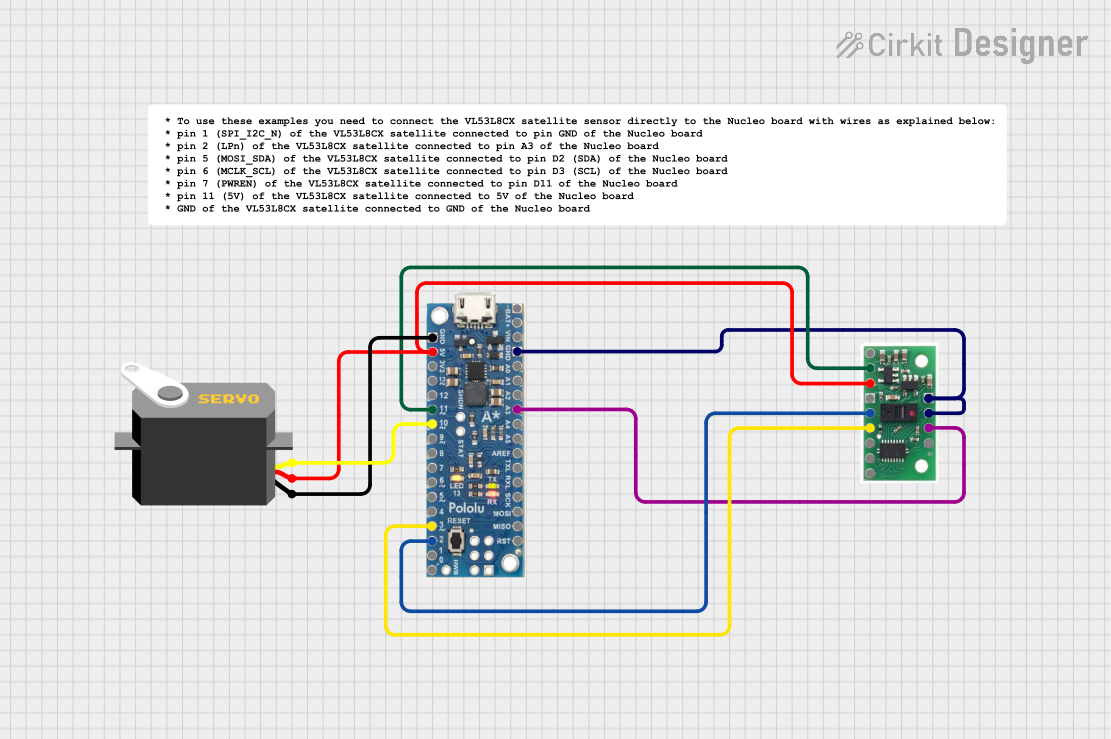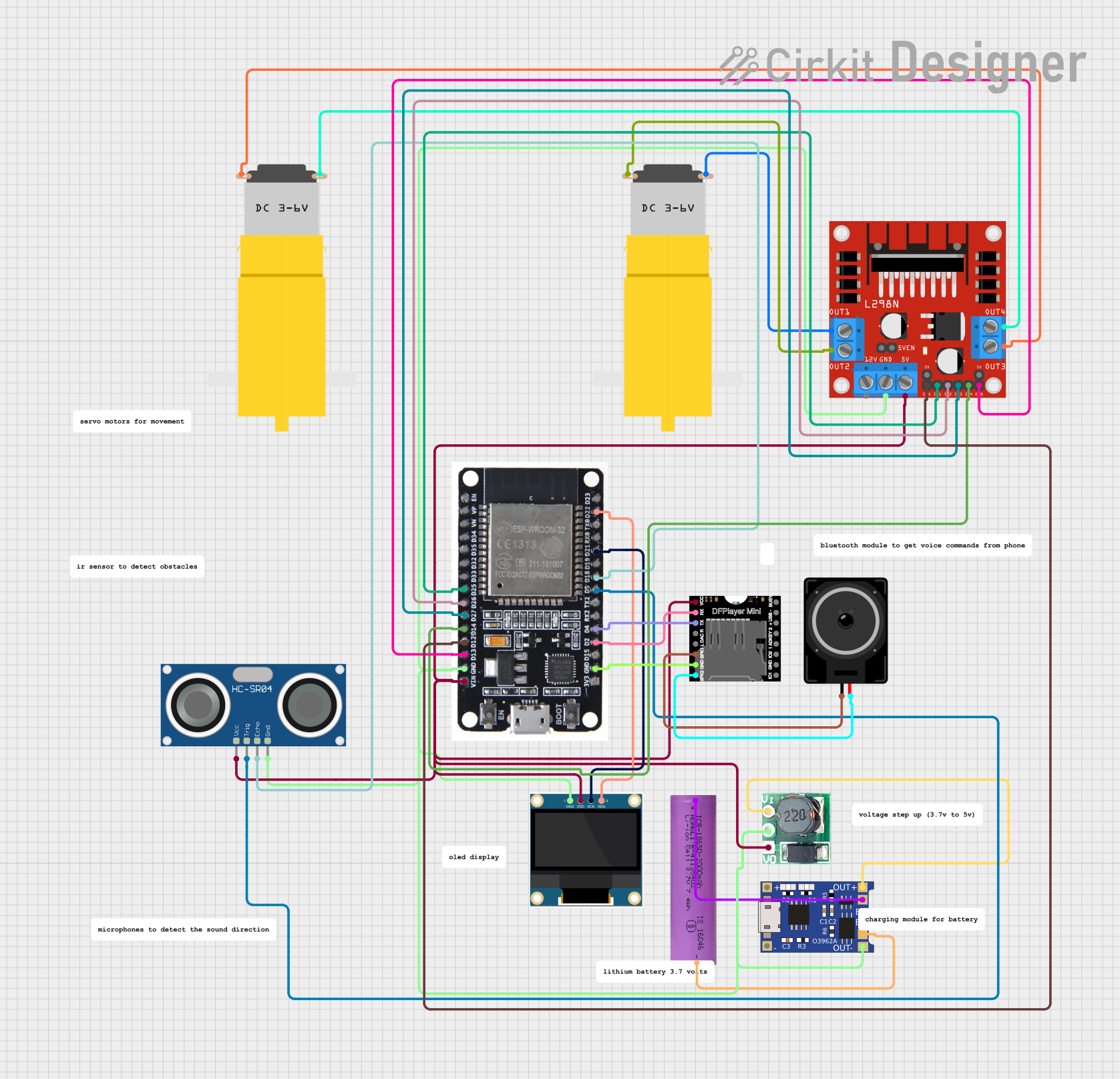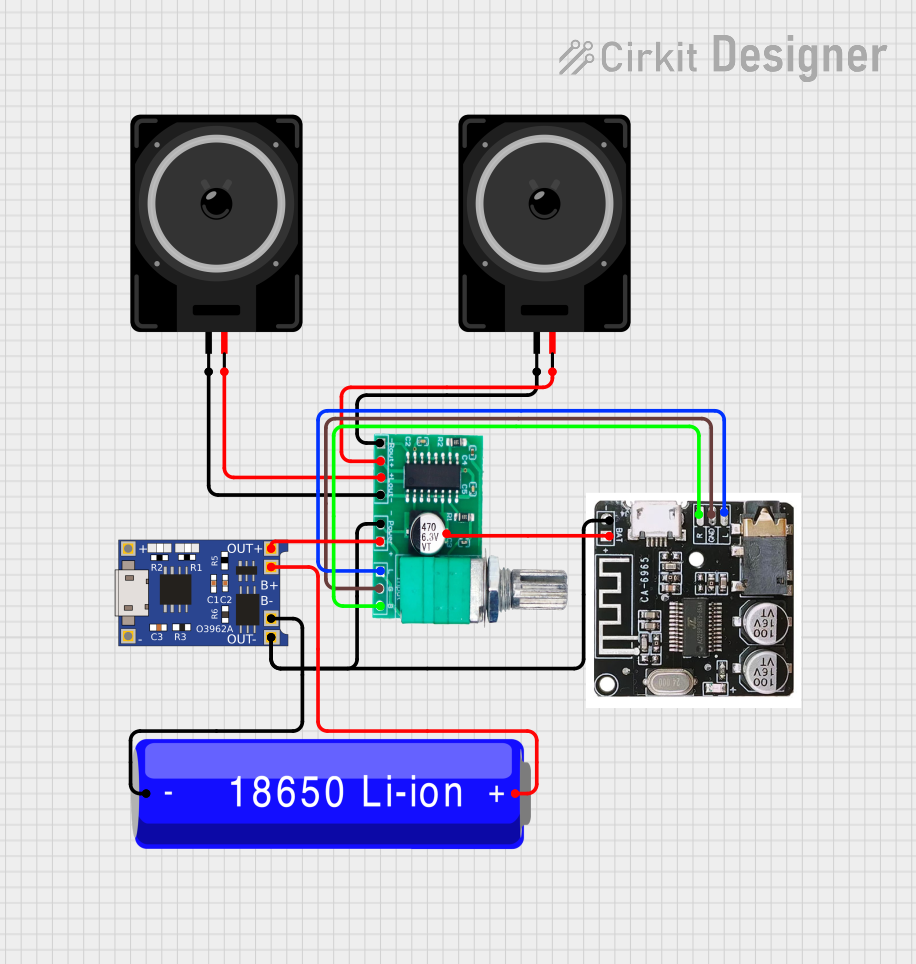
How to Use tof400c-vl53l1x: Examples, Pinouts, and Specs

 Design with tof400c-vl53l1x in Cirkit Designer
Design with tof400c-vl53l1x in Cirkit DesignerIntroduction
The TOF400C-VL53L1X is a time-of-flight (ToF) distance sensor that uses advanced laser technology to measure distances with high precision. This compact and efficient sensor is capable of measuring distances up to 4 meters with millimeter-level accuracy. Its small form factor and low power consumption make it ideal for a wide range of applications, including robotics, automation, obstacle detection, and proximity sensing.
Explore Projects Built with tof400c-vl53l1x

 Open Project in Cirkit Designer
Open Project in Cirkit Designer
 Open Project in Cirkit Designer
Open Project in Cirkit Designer
 Open Project in Cirkit Designer
Open Project in Cirkit Designer
 Open Project in Cirkit Designer
Open Project in Cirkit DesignerExplore Projects Built with tof400c-vl53l1x

 Open Project in Cirkit Designer
Open Project in Cirkit Designer
 Open Project in Cirkit Designer
Open Project in Cirkit Designer
 Open Project in Cirkit Designer
Open Project in Cirkit Designer
 Open Project in Cirkit Designer
Open Project in Cirkit DesignerCommon Applications:
- Robotics: Obstacle detection and navigation
- Industrial automation: Proximity sensing and object measurement
- Consumer electronics: Gesture recognition and presence detection
- Drones: Altitude measurement and collision avoidance
Technical Specifications
The TOF400C-VL53L1X is designed to deliver reliable and accurate distance measurements. Below are its key technical details:
Key Specifications:
| Parameter | Value |
|---|---|
| Measurement Range | 4 cm to 400 cm (0.04 m to 4 m) |
| Accuracy | ±1 mm |
| Operating Voltage | 2.6V to 3.5V |
| Communication Interface | I²C |
| Operating Temperature | -20°C to +85°C |
| Field of View (FoV) | 27° |
| Power Consumption | Low power mode: 20 µA |
| Dimensions | 4.4 mm x 2.4 mm x 1.0 mm |
Pin Configuration:
The TOF400C-VL53L1X sensor typically comes in a breakout board format. Below is the pinout description:
| Pin Name | Description |
|---|---|
| VIN | Power supply input (2.6V to 3.5V) |
| GND | Ground |
| SDA | I²C data line |
| SCL | I²C clock line |
| XSHUT | Shutdown pin (active low, optional) |
| GPIO1 | Interrupt output (optional, configurable) |
Usage Instructions
The TOF400C-VL53L1X is straightforward to integrate into your projects. Below are the steps and best practices for using the sensor:
Connecting the Sensor:
- Power Supply: Connect the VIN pin to a 3.3V power source and the GND pin to ground.
- I²C Communication: Connect the SDA and SCL pins to the corresponding I²C pins on your microcontroller (e.g., Arduino UNO: A4 for SDA, A5 for SCL).
- Optional Pins:
- Connect the XSHUT pin to a GPIO pin if you need to control the sensor's power state.
- Use the GPIO1 pin for interrupt-based distance measurement if required.
Arduino UNO Example Code:
Below is an example of how to use the TOF400C-VL53L1X with an Arduino UNO. This code uses the Adafruit VL53L1X library, which simplifies sensor integration.
#include <Wire.h>
#include <Adafruit_VL53L1X.h>
// Create an instance of the VL53L1X sensor
Adafruit_VL53L1X vl53 = Adafruit_VL53L1X();
void setup() {
Serial.begin(115200);
while (!Serial) {
delay(10); // Wait for Serial Monitor to open
}
// Initialize I²C communication
if (!vl53.begin()) {
Serial.println("Failed to detect VL53L1X sensor. Check wiring!");
while (1) {
delay(10); // Halt execution if sensor is not detected
}
}
Serial.println("VL53L1X sensor initialized successfully!");
vl53.startRanging(); // Start continuous ranging mode
}
void loop() {
// Read distance in millimeters
uint16_t distance = vl53.read();
if (distance != 0) {
Serial.print("Distance: ");
Serial.print(distance);
Serial.println(" mm");
} else {
Serial.println("Error reading distance!");
}
delay(100); // Delay for stability
}
Best Practices:
- Power Supply: Ensure a stable 3.3V power source to avoid measurement errors.
- I²C Pull-Up Resistors: Use 4.7kΩ pull-up resistors on the SDA and SCL lines if not already included on the breakout board.
- Ambient Light: Avoid direct exposure to strong ambient light sources, as they may interfere with the sensor's laser measurements.
- FoV Considerations: Ensure no obstructions within the sensor's 27° field of view for accurate readings.
Troubleshooting and FAQs
Common Issues:
Sensor Not Detected:
- Cause: Incorrect wiring or I²C address mismatch.
- Solution: Double-check the connections and ensure the I²C address matches the library's default (0x29).
Inaccurate Measurements:
- Cause: Strong ambient light or reflective surfaces.
- Solution: Reduce ambient light or reposition the sensor to avoid reflective surfaces.
No Distance Reading:
- Cause: Sensor not initialized or XSHUT pin held low.
- Solution: Verify the sensor initialization in the code and ensure the XSHUT pin is not pulled low.
FAQs:
Can the sensor measure distances beyond 4 meters?
- No, the maximum range of the TOF400C-VL53L1X is 4 meters.
Is the sensor eye-safe?
- Yes, the sensor uses a Class 1 laser, which is safe for human eyes under normal operating conditions.
Can I use the sensor with a 5V microcontroller?
- Yes, but you must use a level shifter for the I²C lines to avoid damaging the sensor.
By following this documentation, you can effectively integrate the TOF400C-VL53L1X into your projects and troubleshoot common issues with ease.